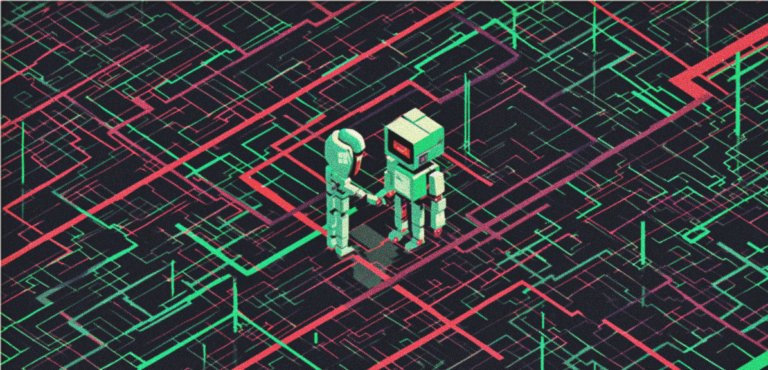
How HCI and UX Design Create Seamless User Experiences
Bridging the gap between tech and people
Your tech should empower users to connect with the digital world, not frustrate them into abandonment. Need a hand with that? Two design principles, Human-Computer Interaction (HCI) and User Experience (UX) design come in to create user interfaces and systems that are intuitive, accessible, and enjoyable. HCI and UX professionals design experiences that meet our needs and expectations by understanding how people interact with technology.
From a business perspective, user-led design means increased user adoption, improved productivity, and a more equitable digital world.
Let’s explore the role of HCI and UX design: more specifically, how these fields focus on usability, accessibility, and aesthetics to create user-centred experiences. We’ll also see how HCI and UX professionals use user research and testing to inform their designs, and explore the benefits of well-designed user experiences for both users and businesses.
Start simple: definitions of HCI and UX
Imagine a builder meticulously studying the bridge connecting humans and the digital world to build a better, stronger, more beautiful bridge. That builder is an HCI pro; they design, evaluate, and implement interactive systems for human use. HCI goes technical by tying in cognitive psychology, accessibility, ergonomics, and design principles to create intuitive and efficient computer interfaces.
HCI is the conduit, ensuring information flows seamlessly and frustration-free between humans and technology. HCI professionals wear many hats, focusing on the design, evaluation, and implementation of interactive systems for human use.
While HCI focuses on the technical aspects of interaction, UX professionals take a wider lens, encompassing the entire user journey with a product or service. They are the storytellers, weaving a narrative that makes using technology a delight. From initial discovery to long-term use, UX professionals consider every touchpoint, crafting an experience that is both positive and engaging. They ensure that interacting with technology is not just functional but a journey of discovery and satisfaction – and are constantly trying to find the answers through design.
How to combine HCI and UX for better, stronger design
HCI and UX professionals, like the instruments in a well-orchestrated symphony, work together to create a harmonious user experience. They begin by conducting user research and testing to understand users’ needs, expectations, and frustrations. Armed with this knowledge, they design truly user-centric interfaces through clear navigation, intuitive instructions, and prioritizing accessibility.
HCI and UX professionals prioritize clear navigation and logical layouts to ensure users can find what they need easily. Effective design makes interactions intuitive and learnable, minimizing the need for extensive tutorials. Both design principles strive for inclusivity, ensuring everyone can benefit from technology. They cater to diverse abilities and needs by creating interfaces that are accessible to individuals with disabilities.
Visual appeal is not just a cosmetic consideration; it can significantly enhance usability. Strategic use of colour, spacing, and imagery can transform interactions from mundane to engaging. A well-designed interface with a pleasing visual hierarchy looks good and helps users find information and complete tasks more efficiently.
Crafting engaging interactions between product and user
Well-designed interfaces go far beyond simply being usable. UX design incorporates elements that elevate user interactions from functional tasks to enjoyable experiences.
Clear communication is paramount. Effective interfaces prioritize clear and concise language throughout. Every message, instruction, and notification should easily guide users through tasks. Equally important are helpful feedback mechanisms to keep users informed about the status of their actions and guide them seamlessly through the process.
The impact of HCI and UX extends far beyond creating frustration-frree technology. Their expertise creates a ripple effect that benefits individuals, businesses, and society as a whole:
- Increased user adoption and engagement: When interfaces are easy to use and enjoyable, users are more likely to adopt and engage with a product or service. This translates to a wider reach and higher user satisfaction.
- Enhanced productivity and efficiency: Intuitive interfaces save users time and effort, boosting their overall productivity. This translates to happier employees and a more efficient ecosystem.
- Improved accessibility and inclusion: By prioritizing accessibility, HCI and UX ensure that everyone can benefit from technology. This fosters a more inclusive society.
Distilled
HCI and UX design bridge the gap between the general population and technology it relies on each day. By understanding how we interact with machines, orgs can craft user experiences that are intuitive, accessible, and enjoyable.